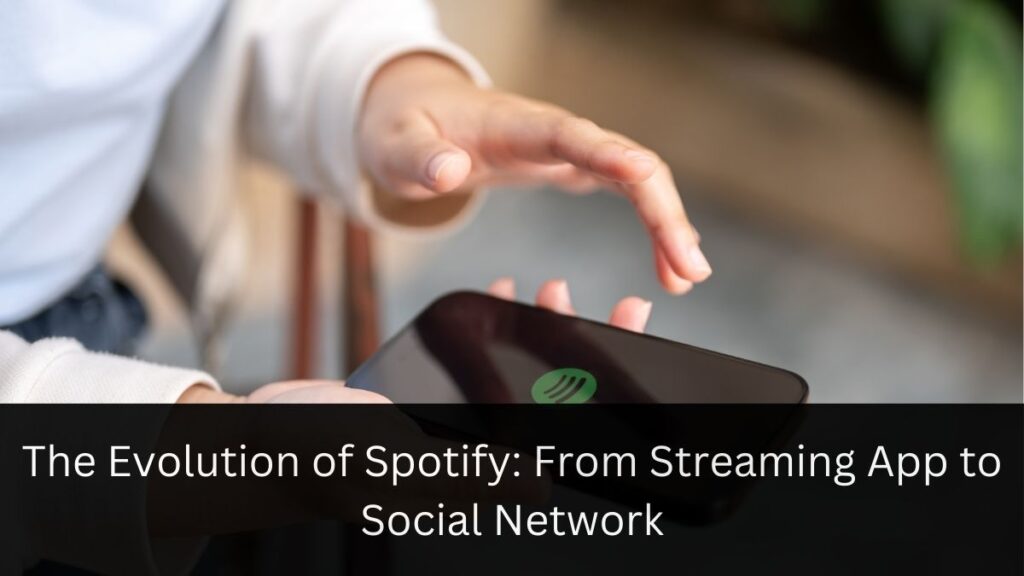In the ever-changing landscape of digital entertainment, Spotify has undergone a remarkable transformation. What was once primarily a music streaming platform has now blossomed into a burgeoning social network, centered around all things audio. This metamorphosis didn’t happen overnight; rather, it’s been a gradual evolution, marked by strategic feature additions and a keen eye on user engagement.
The Social Shift
Comments: A Game-Changer for Podcasts
Spotify’s recent introduction of comments on podcast episodes marks a significant milestone in its journey towards becoming a social platform. This feature allows podcasters to directly engage with their listeners within the app, fostering a sense of community and encouraging deeper connections between creators and their audience.
As Maya Prohovnik, Spotify’s VP of Podcast Product, puts it, “We always want to do whatever is right for the format, and those types of creators and artists.” This statement hints at the company’s thoughtful approach to feature development, tailoring each addition to the specific needs of different content types and creators.
Beyond Podcasts: The Potential for Music
While comments are currently limited to podcasts, the possibility of extending this feature to music artists’ pages is tantalizing. Imagine being able to share your thoughts on a new album directly with the artist and fellow fans, all within the Spotify app. The potential for fostering vibrant fan communities is immense.
Learning from the Past
Apple’s Attempts: Ping and Connect
Spotify isn’t the first to attempt building a social network around music. Apple, with its iTunes platform, made two notable attempts:
- Ping (2010-2012): Introduced by Steve Jobs as “Facebook and Twitter meet iTunes,” Ping aimed to create a social network centered on music. Despite the hype, it failed to gain traction and was shut down just two years later.
- Connect (2015-2018): Another attempt by Apple to integrate social features into its music platform, Connect also met a similar fate.
These failures serve as cautionary tales, highlighting the challenges of successfully merging social networking with music streaming. However, they also underscore the potential value of such an integration if done right.
Spotify’s Stealthy Social Strategy
Unlike Apple’s bold declarations, Spotify has taken a more subtle approach to building its social features. The company has steadily introduced a series of social elements without explicitly labeling itself as a social network. This strategy allows Spotify to test and refine features without the pressure of living up to a grand social networking vision.
Key Social Features
- TikTok-like Discovery Feed: Introduced in 2023, this feature brought video feeds to Spotify’s Home pages, clearly inspired by the success of TikTok’s format.
- Spotify Clips: Similar to Stories on other social platforms, this feature allows artists to share 30-second videos on their profile and album pages.
- Countdown Pages: These pages build anticipation for new releases, engaging fans in the lead-up to an album or single drop.
- Collaborative Playlists: Users can create and edit playlists together, fostering a sense of shared musical experiences.
- Real-time Listening: A feature in testing that would allow users to see what their friends are currently streaming.
The TikTok Influence
Spotify CEO Daniel Ek acknowledged the influence of TikTok on the platform’s design during a Q1 2024 earnings call. He stated, “We are not any different than anyone else in that we’re trying to learn from the marketplace. We learn what consumers like. We try to improve upon it and make the best possible user experience.”
This willingness to learn from successful social platforms demonstrates Spotify’s adaptability and commitment to evolving with user preferences.
The Future of Spotify as a Social Network
As Spotify continues to add social features, the question arises: What does this mean for the future of the platform?
Engagement Beyond Listening
The addition of social features aims to keep users engaged with the app even when they’re not actively listening to music or podcasts. By encouraging users to comment, share, and interact, Spotify is positioning itself as a destination for music and podcast enthusiasts to connect and engage with content and each other.
Competing for User Time and Ad Dollars
By becoming more social, Spotify is not just competing with other music streaming services but also vying for users’ time against traditional social networks. This expansion could potentially open up new revenue streams through increased ad opportunities and user engagement.
Challenges and Opportunities
While the social shift presents exciting opportunities, it also comes with challenges. Spotify will need to balance its core function as a music and podcast platform with its new social aspirations. Maintaining a user-friendly experience while adding features will be crucial to the success of this evolution.
Spotify’s transformation from a simple streaming app to a budding social network centered around audio marks an exciting new chapter in the platform’s history. By carefully integrating social features and learning from both past failures and current successes in the social media landscape, Spotify is carving out a unique space for itself.
As users, we stand at the threshold of a new era in how we consume and interact with audio content. The question now is: How will this evolution change our relationship with music and podcasts? Will Spotify’s social features enhance our enjoyment of audio content, or will they become a distraction from the core listening experience?
Only time will tell how successful Spotify’s social aspirations will be, but one thing is certain: The way we engage with music and podcasts is changing, and Spotify is at the forefront of this transformation.
What are your thoughts on Spotify’s social features? Do you see yourself engaging more with the app as it becomes more social? Share your perspectives and join the conversation about the future of audio streaming and social networking.

